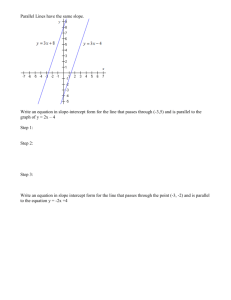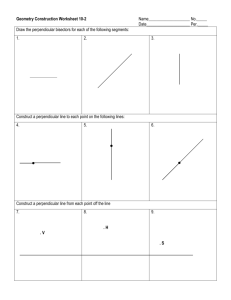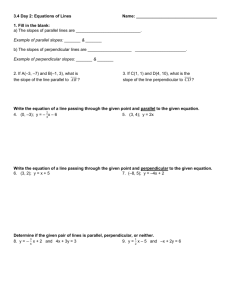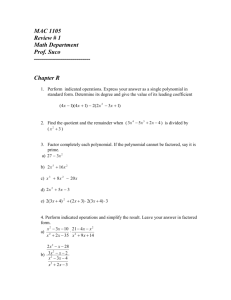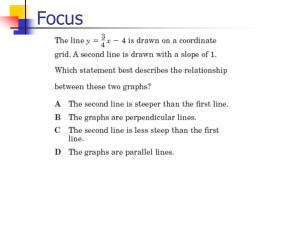6-6: Parallel and Perpendicular Lines
advertisement
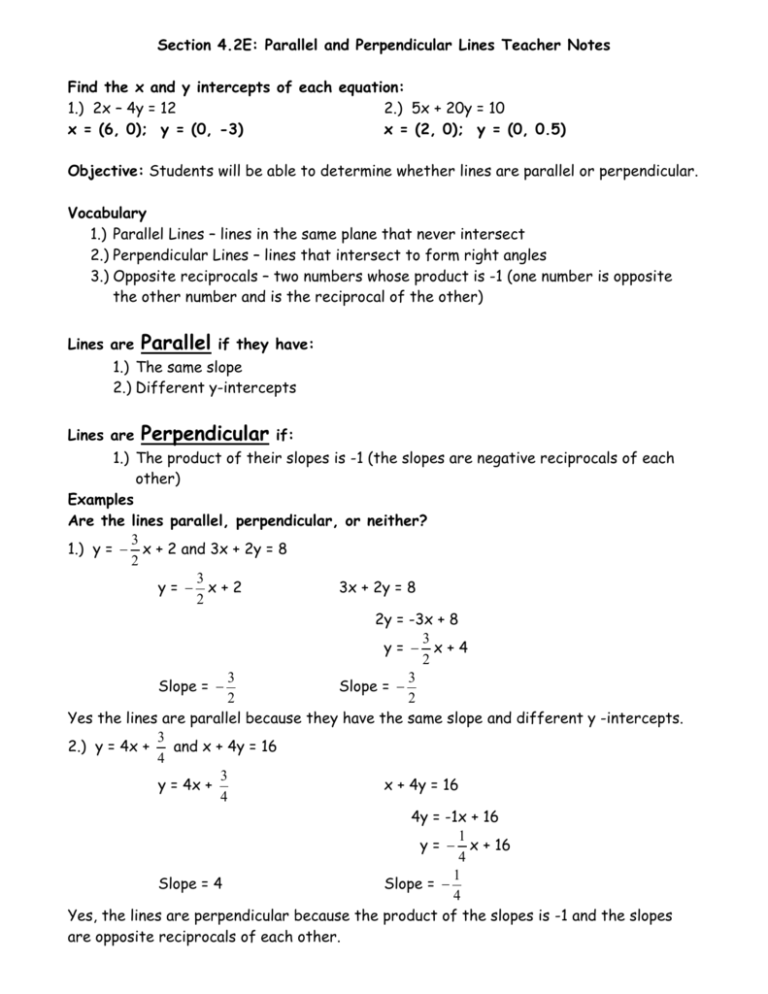
Section 4.2E: Parallel and Perpendicular Lines Teacher Notes Find the x and y intercepts of each equation: 1.) 2x – 4y = 12 2.) 5x + 20y = 10 x = (6, 0); y = (0, -3) x = (2, 0); y = (0, 0.5) Objective: Students will be able to determine whether lines are parallel or perpendicular. Vocabulary 1.) Parallel Lines – lines in the same plane that never intersect 2.) Perpendicular Lines – lines that intersect to form right angles 3.) Opposite reciprocals – two numbers whose product is -1 (one number is opposite the other number and is the reciprocal of the other) Lines are Parallel if they have: 1.) The same slope 2.) Different y-intercepts Lines are Perpendicular if: 1.) The product of their slopes is -1 (the slopes are negative reciprocals of each other) Examples Are the lines parallel, perpendicular, or neither? 3 1.) y = x + 2 and 3x + 2y = 8 2 3 y= x+2 3x + 2y = 8 2 2y = -3x + 8 3 y= x+4 2 3 3 Slope = Slope = 2 2 Yes the lines are parallel because they have the same slope and different y -intercepts. 3 2.) y = 4x + and x + 4y = 16 4 3 y = 4x + x + 4y = 16 4 4y = -1x + 16 1 y = x + 16 4 1 Slope = 4 Slope = 4 Yes, the lines are perpendicular because the product of the slopes is -1 and the slopes are opposite reciprocals of each other. 3.) y = -5x and y = 5x + 7 Slope = -5 and Slope = 5 Parallel: No, not the same Perpendicular: No, not the opposite reciprocals Neither 4.) Which lines are parallel? Justify your answer. 3 3 1 6 Line B: Slope = 3 2 4 Line C: Slope = 4 1 Line A: Slope = Lines A & B are parallel because they have the same slope and different y-intercepts.
